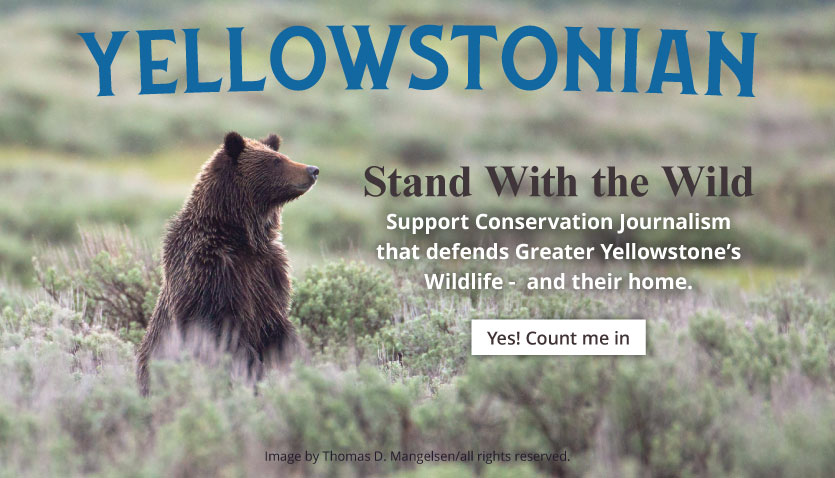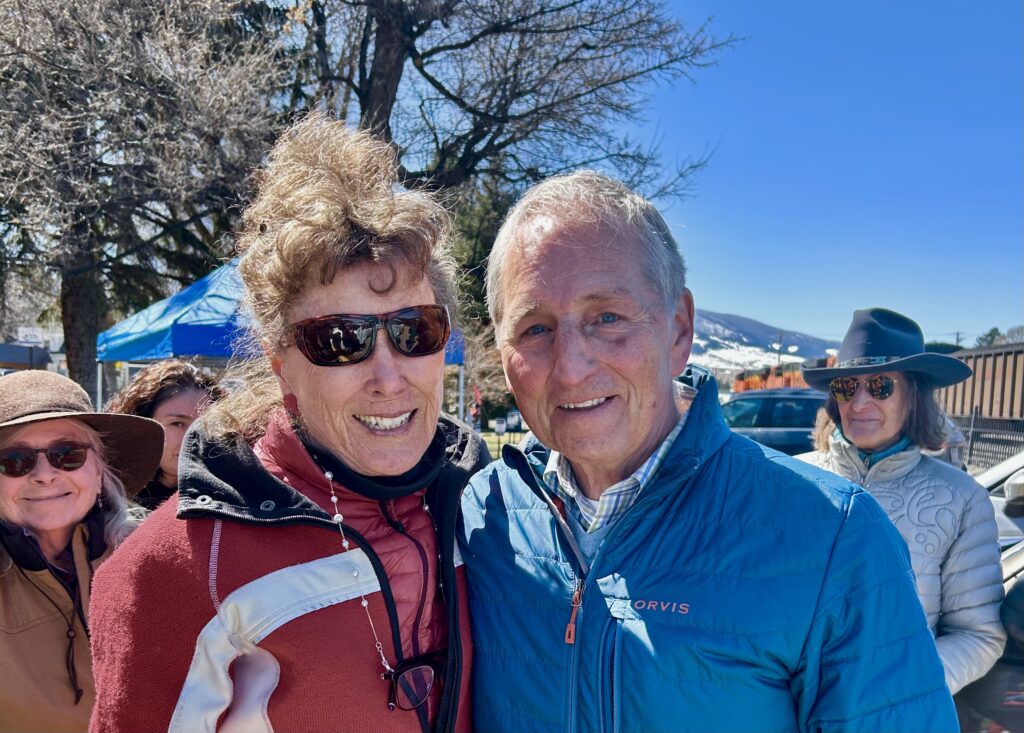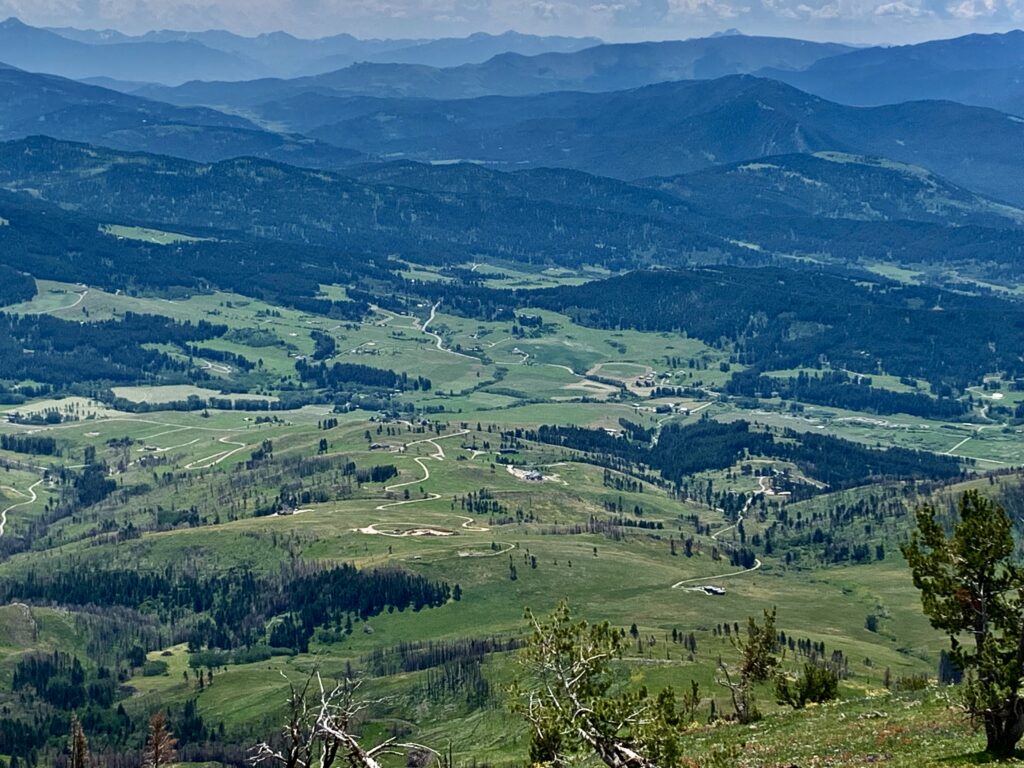by Brad Orsted
“He used both hands when he made the bear. Imagine a bear proceeding from the hands of God.”
—N. Scott Momaday
Spring of 2012 was a magical time living in Yellowstone National Park. Wildflowers blooming everywhere, and the Canyon wolf pack, with its white alpha female, were regular visitors to my new 2.2 million acre back yard. Cotton-ball-spotted elk calves, shiny in the new sun, coaxed by warm winds coming off of the high plateau, wobbled through the parade grounds at Mammoth Hot Springs. It was idyllic, and yet I still wanted to die.
It had been nearly two years since we’d lost our sweet Marley but in that place a daddy holds for his daughter, time was not linear.
Having realized that simply by moving to the world’s first national park, that I had not been osmotically healed from the unthinkable, created a rising, a foreshadowing, of perpetual doom on my horizon. No matter how many howling wolves I heard, or handfuls of prescription drugs I gobbled, I just couldn’t shake the looping theater of loss inside my head. Inside my soul. If anything, moving to one of the wildest places in the Lower 48, fresh from tragedy, only accentuated my despair, when I couldn’t be happy, nor sober, in Yellowstone either.

One night, drunk and despondent, I’d written in my journal something along the lines of, “the best thing that could probably happen to me would be to die in the back country, and let the birds and the bears shit me out somewhere beautiful.” It seemed a logical, and even a poetic conclusion at the time, thus providing a brief respite for my overworked mind.
Weeks later, waking up hungover and ashamed again, I forced myself out into the wild, in lieu of day-drinking and Xanax. It was there, with ominous, slate-gray storm clouds receding to the east, on a sagebrush steppe, a grizzly bear lifted its wet head, and looked right through me; changing not only my mind about wanting to die, but the trajectory of my life thereafter.
In that brief, innocuous encounter, staring at a grizzly bear staring back at me, something deep inside of me awoke. My will to live. A blow poke on dying embers. I knew then I had never wanted to die. I just didn’t know how to live in this strange new world of loss. I could not reconcile the beautiful amazingness all around me in Yellowstone, with the ugly pain that dwelled inside of me. Just a glance from something truly wild, laser focused my tormented mind, if just for a moment. A wrinkle in the misery de jour that had become my life. A gift from the grizzlies.

Many native cultures believe that the grizzly bear was sent from the stars to keep humans humble. To show those with the calling; a sacred grizzly bear medicine. A gift, hand crafted, with both hands, and sent to Earth from the stars by Creator.
Years after my griz encounter, while producing a film with Doug Peacock and Jeff Bridges titled “The Beast of Our Time: Climate Change and Grizzly Bears,” I asked one of my well-connected Native friends if he knew of any plains tribes we could possibly film, or interview, about ancient grizzly bear ceremonies. I thought maybe if we were able to show that the original caretakers of these Turtle Islands lived with other five-toed sentient beings for eons, the film could shed some light on the historical importance of grizzlies, and how we too, must find a way to live together.
Sadly, I was informed that there aren’t as many grizzly bear dances, or ceremonies going on within the plains tribes anymore, nor healers with grizzly bear medicine to even film, or interview. When I asked why the grizzly bear wasn’t a bigger part of their culture, as grizzlies and the tribes had shared the Great Plains for thousands of years, I was told in a story how, at one time. they were relatives—humans and bears. But once the physical animal was exterminated from the landscape, the stories, the medicine, the connection and the ceremonies eventually go with it. Gone. Back to the stars. With both hands.

This is what we stand to lose if we part ways with the grizzly bear. If we allow them to be delisted and hunted, because that is the motivation of those who want to remove the shield of protection, so they can possess them in death. When we willfully erase them for no other reason than for personal entertainment, we lose not just the prowess of the bear on the mountain, but the lessons, the wisdom, the healing, the stories, and the whole cultural enchilada eventually disappears like it never existed.
Gone, back to the stars. Something formidable within us passes too when we surrender the grizzly bear and the spirit of its home. The wild within us withers from neglect in the great bear’s absence. And, at once brimming with the energy of a past connected to the future, turns lonely and somber.
The power of the grizzly, the grace, the clumsiness, it as inquisitive being and always hungry for more—that dies inside of us too, forever. Gone back to the stars. With both hands. We owe it to ourselves, and more importantly, to the grizzly’s ongoing recovery and our unborn, to let them have a chance to coexist where we seem to struggle.
Today we stand on a precipice. Like no other time in our existence, we have the capacity to love and learn to live together. Or, we can succumb to fear and myopia. We have a responsibility to not destroy things we did not create. Let’s bring back the ceremonies or create our own. Let’s bring back the stories. Let’s bring back the dances. Let’s wake up from our own sleepwalking slumber. Let’s embrace wisdom and healing —with both hands. We have the power. But do we have the courage?







